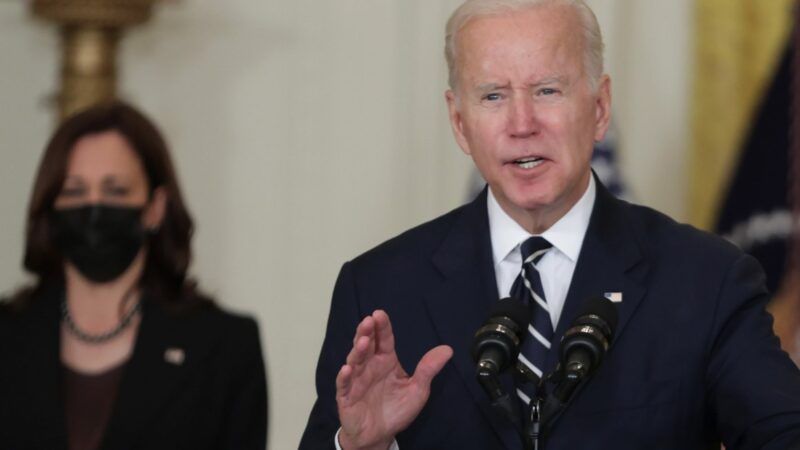Biden Dumps Free Community College From Spending Bill
These schools are already extremely accessible to low-income students. Don’t mess with their flexibility.

President Joe Biden's plans for two years of free community college appear to have been scrapped from his "Build Back Better" spending extravaganza.
In an address to Congress back in April, Biden announced a $109 billion plan to make community college free, resurrecting a plan the Obama era that ultimately went nowhere. Biden's plan will apparently share that fate, as it was not included in the giant-yet-nevertheless-scaled-back "framework" that the White House released this morning. Instead, he's proposing an increase to the cap for Pell Grants by $550, putting the top possible annual grant at around the $7,000 range for the neediest students.
Dumping the plan was the right thing to do—not that the White House had much choice. Biden said on CNN this month that Sen. Joe Manchin (D–W.Va.) and one other unnamed senator did not support the community college plan. So he didn't have 50 votes for it.
To be clear: The problem is not that community colleges are bad. I attended one myself! But they're already incredibly affordable, thanks to Pell Grants and scholarships. On average, a committed student pursuing an associate's degree can already get two years of education without paying any tuition out of pocket.
Meanwhile, Biden's proposal was not means-tested. Proponents insisted that making community college free would make it more accessible, but the actual effect would be to subsidize families who can already easily afford these reasonable costs.
And then there's the matter of community college's completion rates, which rarely gets mentioned in coverage of the issue. Only about 40 percent of community college students finish their education there within six years. That in itself is not a big flaw in the system: The flexibility of a small college system low-income people who have a lot of demands on their time to drop in and out as their life permits. But under Biden's proposal, taxpayers would have been on the hook for the 60 percent who don't make it—and this is on top of the extensive federal and state subsidies we're already sending to our community colleges.
Don't assume that more federal subsidies will make tighter commitments possible. Washington state has an extensive state grant program that already makes tuition free for qualifying students to attend select community colleges, but The Wall Street Journal reports that "the costs of housing, child care, transportation and books are so high in the Seattle area many students still drop out to work despite the subsidy." The Journal's source for that nugget was Timothy Stokes, president of South Puget Sound Community College; remarkably, Stokes think this is an argument for more taxpayer funding, because then Washington state could somehow shift its own tuition program to a financial assistance program for these students.
Somebody needs to show Stokes this graph from the American Enterprise Institute, which shows how the costs of goods and services with heavy amounts of government regulation continue to rise. College tuition and textbooks have jumped 200 percent in price since 1997, far above the rate of inflation. From 2008 to 2010, there was a surge in Pell Grant spending. That spending has since dropped a bit, but the federal government still is spending billions more on tuition assistance than it has in the past.
Some four-year colleges lobbied against the free community college program, instead backing an increase in Pell Grant funding. The Journal explains: "Lobbyists for public four-year colleges have said states might redirect funding from their institutions. And students who otherwise would have attended four-year colleges might opt to attend community college for the first two years, depriving those campuses of a tuition source."
That "concern" highlights the biggest problem with Biden's proposal. Free community college isn't ultimately a subsidy for students; it's a subsidy for the schools themselves, and particularly school administration. Barbara Mistick, president of the National Association of Independent Colleges and Universities, told the Journal that the proposed system would require a gigantic new bureaucracy. Such plans always includes new systems to monitor success and to try to retain those struggling students, and a good chunk of those billions of dollars would be for paying staff.
Because community colleges are already so accessible, and because states are well-suited to devising mechanisms to keep them that way, federal subsidies would merely muddy the water—and put a straightjacket on a system that thrives on flexibility.


Show Comments (39)